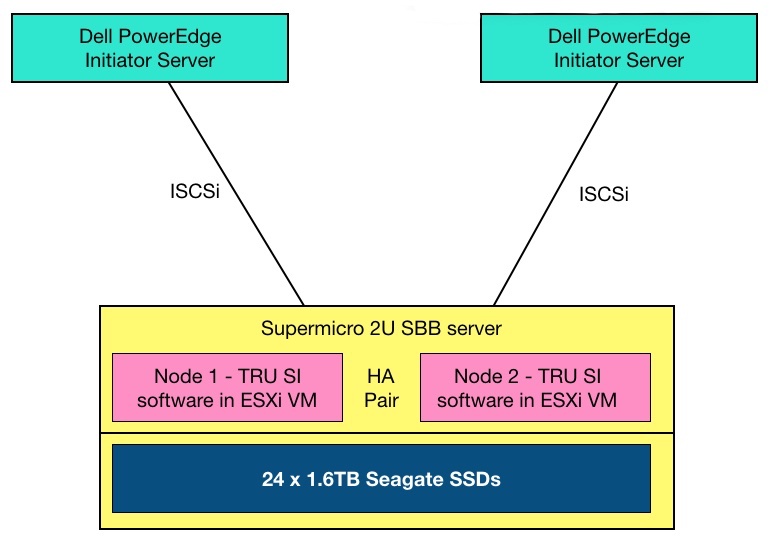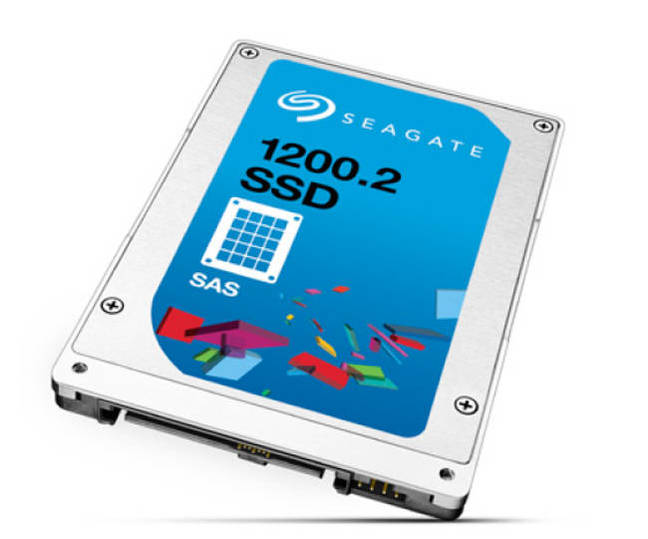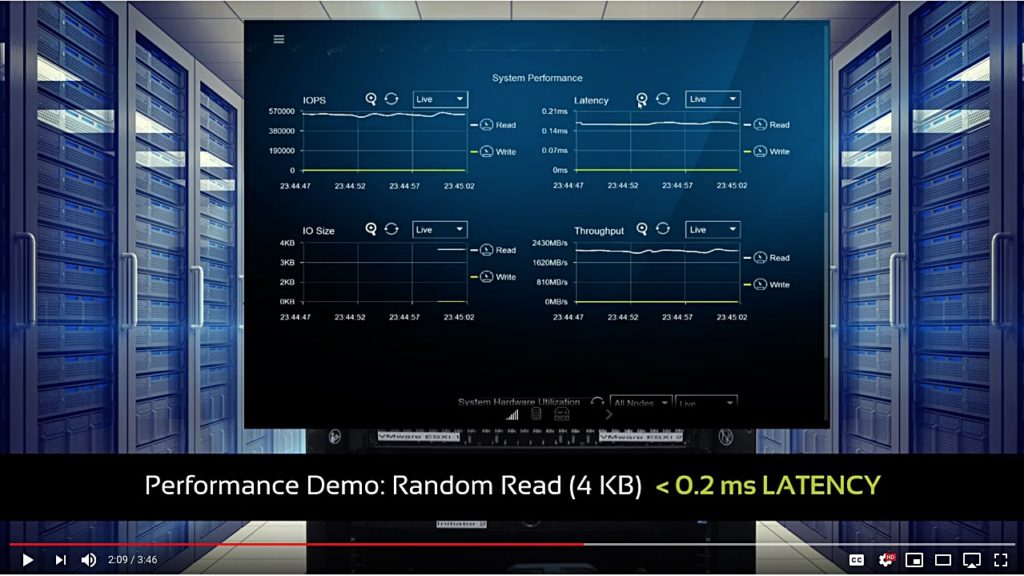Startup StorONE claims record performance from its TRU S1 storage software running in a virtual appliance with 24 Seagate SSDs.
Is software ran more than three times faster last year using WD SSDs housed in physical servers.
StorONE has written its own storage stack which supports all storage protocols (block – FC and iSCSI, file – NFS, and object – S3) on the same drives. It supports all drive types in the same server and an unlimited snapshot capability.
A YouTube video shows the latest demo. The StorONE TRU S1 software ran in two ESXi VMs forming a high-availability pair, which in turn executed in a 2-node, 2U Supermicro SBB server, a virtual appliance, filled with the SSDs.
This storage target talked to two initiators running in Dell PowerEdge servers across ISCSi links.

The SSDs were Seagate ST1600FM0003 devices, 1200.2 1.6TB, 12Gbit/s SAS interface drives announced in 2015. This is fairly old technology.

The results were
- 500,000 random read IOPS (4K blocks)
- 180,000 random write IOPS
- 10GB/sec sequential read bandwidth (128K)
- 5GB/sec sequential write bandwidth
- Average latency <0.2ms
This is with full data protection running and unlimited snapshots.

The WD SSD demo last year used 24 x SS200 3.84TB SAS SSDs. Its performance numbers were:
- 1.7m random read IOPS (4K blocks)
- Random write IOPS not supplied
- 15GB/sec sequential read bandwidth (128K)
- 7.5GB/sec sequential write bandwidth
- Average latency <0.3ms
That was more than three times the random read IOPS and 50 per cent more sequential read and write bandwidth than in the latest StorONE-Seagate demo. The latency was a smidgin longer but, against the faster IOPS and bandwidth numbers, pretty inconsequential.
Gal Naor, StorONE founder and CEO, told us: “We managed to achieve the amount of IOPS with a StorONE virtual solution while the 1.7m IOPS was achieved with physical servers. 250,000 IOPS with a single storage virtual node is a very high number.”
“Other vendors, in order to get 500,000 IOPS, need many many nodes and DRAM. Our CPU and memory usages are very low and there is huge space for many VMs.” StorOne used a single VM.
So that’s us told. Physical servers can go faster than their virtual counterparts and StorONE VMs go faster than other peoples’.








